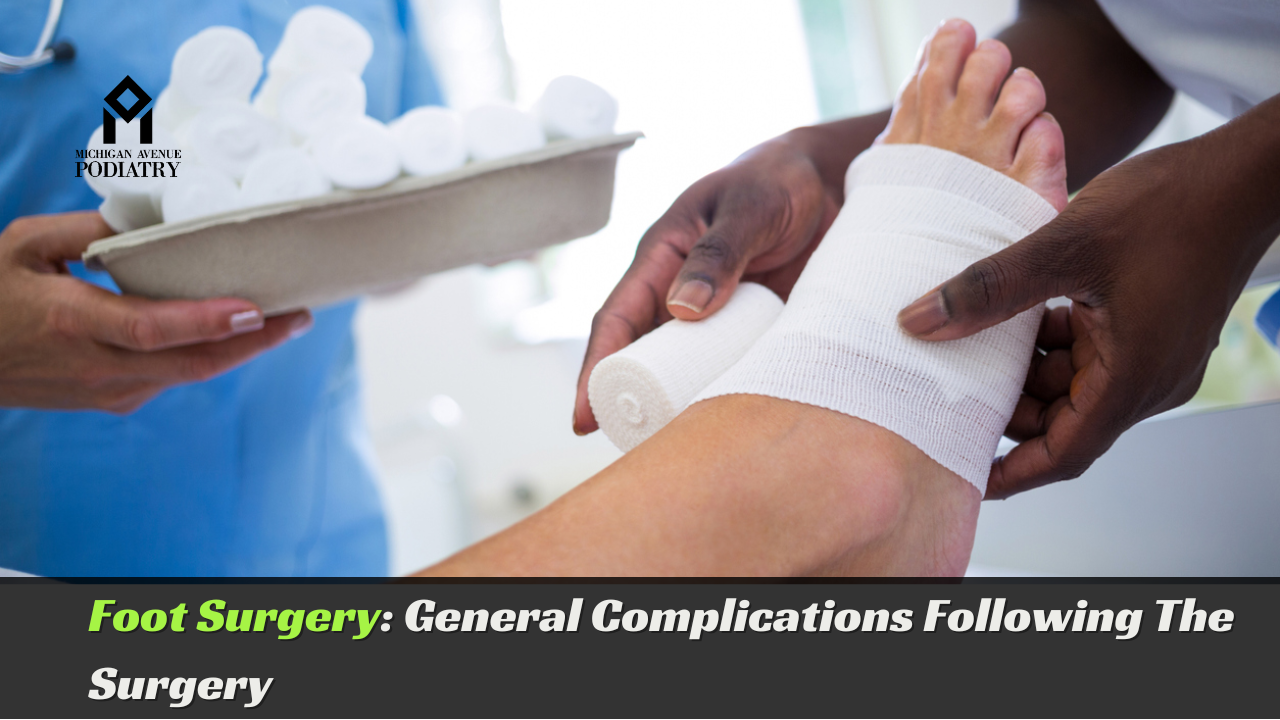Embarking on the journey of foot surgery can be daunting, yet it often marks a pivotal step toward relieving chronic pain and restoring mobility. While advancements in medical technology have enhanced surgical outcomes, it’s essential to acknowledge and prepare for potential complications that may arise during the recovery process. In this comprehensive guide, we explore the general complications associated with foot surgery, empowering individuals with the knowledge to navigate their healing journey effectively.
Understanding Foot Surgery: A Paradigm of Precision
Foot surgery, encompassing various procedures targeted at addressing a spectrum of foot and ankle problems, aims to alleviate pain, correct deformities, and restore function. From bunionectomy to Achilles tendon repair, each surgical intervention demands meticulous planning, precise execution, and comprehensive post-operative care.
Common Complications Post-Foot Surgery: Navigating the Challenges
Despite the meticulous approach adopted by skilled surgeons, foot surgery, like any surgical procedure, carries inherent risks and potential complications. Let’s delve into the general complications individuals may encounter following foot surgery:
- Pain and Discomfort:
- Cause: Pain is a natural response to tissue trauma and surgical manipulation.
- Management: Adequate pain management strategies, including medication and physical therapy, are essential to alleviate discomfort and facilitate healing.
- Swelling and Inflammation:
- Cause: Surgical trauma triggers an inflammatory response, leading to swelling and edema.
- Management: Elevating the affected foot, applying ice packs, and compression therapy can help reduce swelling and promote circulation.
- Infection:
- Cause: Exposure to bacteria during surgery or post-operative care can lead to infection.
- Management: Vigilant wound care, prophylactic antibiotics, and prompt intervention for signs of infection are crucial to prevent complications.
- Delayed Healing:
- Cause: Poor circulation, underlying medical conditions, or surgical complications may impede the healing process.
- Management: Close monitoring by a healthcare provider, nutritional support, and appropriate wound care can facilitate optimal healing.
- Nerve Damage:
- Cause: Surgical manipulation or trauma may result in nerve injury, leading to numbness, tingling, or loss of sensation.
- Management: Nerve monitoring during surgery, early detection of symptoms, and rehabilitative measures can aid in nerve recovery.
- Scar Tissue Formation:
- Cause: The body’s natural healing response may result in excessive scar tissue formation, potentially limiting range of motion.
- Management: Gentle stretching exercises, scar massage, and, in severe cases, scar revision surgery may be warranted.
Navigating Recovery: Empowering Individuals with Knowledge
While the prospect of complications may instill apprehension, proactive measures can mitigate risks and enhance recovery outcomes:
- Follow Post-Operative Instructions: Adhering to the surgeon’s recommendations regarding wound care, activity modification, and follow-up appointments is paramount.
- Monitor for Signs of Complications: Stay vigilant for symptoms such as increased pain, swelling, redness, fever, or drainage from the surgical site, and promptly report any concerns to your healthcare provider.
- Engage in Rehabilitation: Participate actively in prescribed rehabilitation exercises and physical therapy sessions to optimize functional outcomes and prevent complications.
- Maintain a Healthy Lifestyle: Adequate nutrition, hydration, and rest are essential components of the healing process, promoting optimal recovery and overall well-being.
The Role of a Podiatrist: Partnering in Your Healing Journey
Throughout the surgical process, a podiatrist serves as a trusted guide, offering expertise, support, and personalized care:
- Preoperative Consultation: A thorough evaluation and discussion of treatment options empower individuals to make informed decisions regarding foot surgery.
- Surgical Expertise: Skilled in the latest surgical techniques, a podiatrist performs procedures with precision and attention to detail, prioritizing patient safety and optimal outcomes.
- Comprehensive Post-Operative Care: From monitoring healing progress to addressing complications, a podiatrist provides ongoing support and guidance, ensuring a smooth recovery journey.
Conclusion: Empowering Recovery Through Knowledge and Preparation
In conclusion, while foot surgery entails inherent risks and potential complications, proactive measures, informed decision-making, and collaborative care with a podiatrist can optimize recovery outcomes. By understanding the general complications associated with foot surgery and embracing a proactive approach to recovery, individuals can embark on their healing journey with confidence and resilience.




